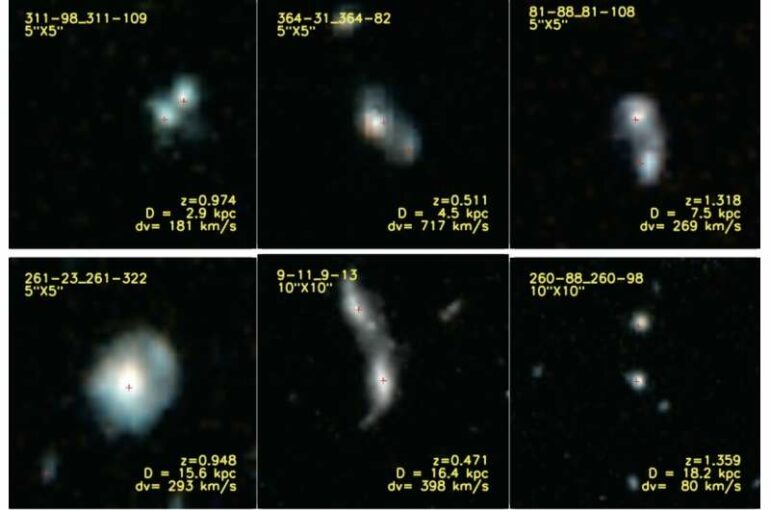The merging of galaxies is one critical path of galaxy evolution, yet the incidence rate of galaxy pairs and their impact on galaxies’ physical properties are far from being definite.
A new study, led by Prof. Y. Sophia Dai from Chinese Academy of Sciences South America Center for Astronomy (CASSACA) at the National Astronomical Observatories of Chinese Academy of Sciences (NAOC), provides fresh insights on whether and how the interaction of two galaxies affect their formation and evolution.
The study was published in The Astrophysical Journal.
“This is the first time that galaxy pairs at redshift ~ 1 have been kinematically confirmed for such a large statistical sample,” said Prof. Y. Sophia Dai, lead author of the study. “Based on a 6-year-endeavor of Hubble Space Telescope’s parallel grism survey, we have acquired spectra for more than 413 pair systems with two or more member galaxies, thus confirming their interacting nature.”
The grism spectroscopy of the Hubble Space Telescope offers spectral coverage into the near-infrared regime, allowing detections of galaxies in the distant universe and kinematical confirmation of galaxy pairs by measuring their precise spectroscopic redshifts (i.e. velocities).
With these unprecedented data, Prof. Dai and her collaborators constructed the largest sample of emission line galaxy pairs dated back to 7 billion years ago.
They found that when two galaxies interact or merge, they will experience an increase of star formation rate by 40%–60%, suggesting interaction triggered galaxy growth. This level of enhancement is comparable to what was previously found in our local universe, indicating similar boost in the formation due to galaxy interactions.
Interestingly, contrary to the increased star growth, the activities in the galaxy center (i.e. the central supermassive black holes) do not seem to be significantly affected by the interaction. Actually, the percentage of galaxies with the most actively growing black holes, often referred to as active galactic nuclei (AGNs), is found to be the same in paired and isolated emission line galaxies.
The researchers constrained the fraction of galaxies in pairs: as we go back in time, more and more emission lines galaxies are found in pairs, with a mild power-law slope of ~ 0.6.
“With James Webb Space telescope (JWST), and with China’s Space Station Telescope (CSST) that also offers grism spectroscopy, we’ll be able to identify even more kinematically confirmed emission line galaxy pairs to better understand their impact on galaxy formation,” said Prof. Dai.
More information:
Y. Sophia Dai et al, Spectroscopically Identified Emission Line Galaxy Pairs in the WISP Survey*, The Astrophysical Journal (2021). DOI: 10.3847/1538-4357/ac2f96
Provided by
Chinese Academy of Sciences
Citation:
Study provides insights on interaction of galaxy pairs (2022, January 25)
